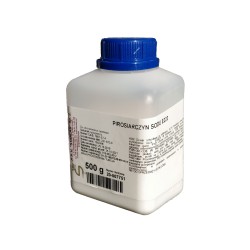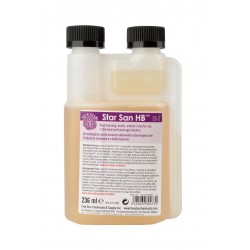Cart 0 Product Products Amount:
(empty)
(empty)
Your cart
Your cart
Together:
No products
To be determined Shipping:
0,00 zł Total:
Product successfully added to your shopping cart (There are 0 items in your cart.) (There is 1 item in your cart.)
Product:
Quantity:
Total:
Total products
Total shipping To be determined
Total

Blog categories
Do you want to start brewing beer at home but don't know anything about it? Check out our blog. We share our knowledge with those who take their first brewing steps, as well as with those who already brew. Home brewing is not difficult!
Top sellers
-

-

-

-

Muslin hop boiling bag 1 piece
Reusable muslin mesh. Perfect for cooking hops and other spices, cold...
4,50 zł -

-

Foreign Extra Stout 16°BLG - malt extract kit
Foreign Extra Stout, a stronger,...
84,15 zł -15% 99,00 zł

2
6340
Data publikacji:
06
OCT
2022
Beer infection. How to recognize and prevent?
Another type of infection that can appear in homemade beer is the growth of mold on the surface of the fermented beer. While in this situation it does not have to change the taste, the beer should be poured out because of the toxins released by the mold.
Udostępnij:
COPYRIGHT 2020 Twój Browar ALL RIGHTS RESERVED Design and implementation dih.pl
















 The symptoms of infection are often clusters of fine yeast flakes that float on the surface of the beer or settle on the edges of the fermenter. Remember that the infectious pellicle is always white or of similar shades. The yeast flakes are beige to brown in color. Pellicle particularly at the beginning, has a homogeneous, membrane-like surface that thickens very quickly. Over time, it may take the form of a very fine spider's web or bubbles may appear on its surface. However, they are definitely larger than the bubbles that make up the fermentation foam.
The symptoms of infection are often clusters of fine yeast flakes that float on the surface of the beer or settle on the edges of the fermenter. Remember that the infectious pellicle is always white or of similar shades. The yeast flakes are beige to brown in color. Pellicle particularly at the beginning, has a homogeneous, membrane-like surface that thickens very quickly. Over time, it may take the form of a very fine spider's web or bubbles may appear on its surface. However, they are definitely larger than the bubbles that make up the fermentation foam.
 Infections with wild yeast strains are much more burdensome. They are not always accompanied by the presence of biofilm, and they almost always permanently change the taste of beer. It may happen that we will be lucky and find a wild yeast strain that will bring noble fruity notes, slightly sour typical of lambik. Unfortunately, however, the most common and least pleasant symptom of wild yeast infection is the characteristic smell and taste of chlorophenol. Described as the aroma of a pharmacy, hospital, lysol, dentist. It is so clear and intense that it is impossible to confuse it with anything else. Unfortunately, such beers are only suitable for tipping. Even the toughest guys quit after drinking a few sips.
Infections with wild yeast strains are much more burdensome. They are not always accompanied by the presence of biofilm, and they almost always permanently change the taste of beer. It may happen that we will be lucky and find a wild yeast strain that will bring noble fruity notes, slightly sour typical of lambik. Unfortunately, however, the most common and least pleasant symptom of wild yeast infection is the characteristic smell and taste of chlorophenol. Described as the aroma of a pharmacy, hospital, lysol, dentist. It is so clear and intense that it is impossible to confuse it with anything else. Unfortunately, such beers are only suitable for tipping. Even the toughest guys quit after drinking a few sips.




Dodaj komentarz
2 komentarze